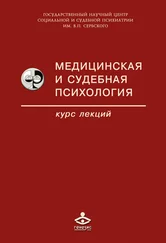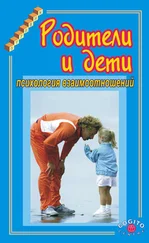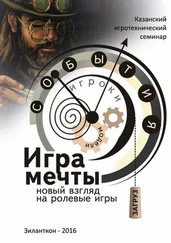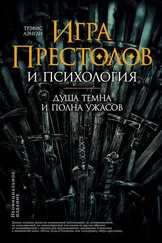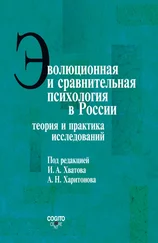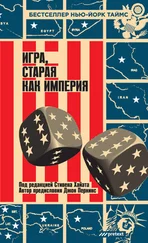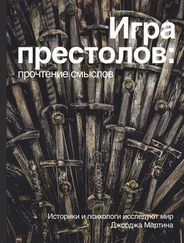Эпизод 1–4 «Калеки, бастарды и сломанные вещи» (8 мая 2011 г.).
Эпизод 4-10 «Дети» (15 июня 2014 г.).
Peterson, C., & Seligman, M. E. P. (2004). Character strengths and virtues: A handbook and classification. Washington, DC: American Psychological Association.
Allison, S. T., & Goethals, G. R. (2013). Heroic leadership: An influence taxonomy of 100 exceptional individuals. New York, NY: Routledge.
Эпизод 4–3 «Разрушительница оков» (20 апреля 2014 г.).
Peterson, C., & Seligman, M. E. P. (2004). Character strengths and virtues: A handbook and classification. Washington, DC: American Psychological Association.
Там же.
VIA Institute on Character (2015). Главная страница. VIA Institute on Character: http://www.viacharacter.org.
Эпизод 1–2 «Королевский тракт» (24 апреля 2011 г.).
Ebbinghaus, H. (1913). Memory: A contribution to experimental psychology. New York, NY: Columbia University, Teachers College.
Kelly, C., & Castellanos, F. X. (2014). Strengthening connections: Functional connectivity and brain plasticity. Neuropsychology Review , 24 (1), 63–76.
Эпизод 3–3 «Стезя страданий» (14 апреля 2013 г.).
Flynn, J. R. (1984a). IQ gains and the Binet decrements. Journal of Educational Measurement , 21 (3), 283–290;
Flynn, J. R. (1984b). The mean IQ of Americans: Massive gains 1932–1978. Psychological Bulletin , 95 (1), 29–51.
Trahan, L. H., Stuebing, K. K., Fletcher, J. M., & Hiscock, M. (2014). The Flynn effect: A meta-analysis. Psychological Bulletin , 140 (5), 1332–1360.
Schooler, C. (2007). Use it — and keep it, longer, probably: A reply to Salthouse (2006). Perspectives on Psychological Science , 2 (1), 24–29.
Johnson, S. (2006). Everything bad is good for you: How today's popular culture is actually making us smarter. New York, NY: Riverhead.
Эпизод 5–9 «Танец драконов» (7 июня 2015 г.).
Эпизод 1–8 «Острый конец» (5 июня 2011 г.).
Эпизод 1–1 «Зима близко» (17 апреля 2011 г.).
Green, C. S., & Bavelier, D. (2008). Exercising your brain: A review of human brain plasticity and training-induced learning. Psychology and Aging , 23 (4), 692–701.
Oakley, B. (2014). A mind for numbers: How to excel at math and science (even if you flunked algebra). New York, NY: Penguin.
Pink, D. (2012). Drive: The surprising truth about what motivates us. New York, NY: Riverhead.
Jenkins, H. (2009). Confronting the challenges of participatory culture: Media education for the 21 [st] century. Cambridge, MA: MIT Press.
Эпизод 4–9 «Дозорные на Стене» (8 июня 2014 г.).
Eysenck, M., & Keane, M. (2015). Cognitive psychology: A student's handbook (7th ed.). New York, NY: Psychology Press.
Эпизод 4–4 «Верный клятве» (27 апреля 2014 г.).
Mayer, J. D., Salovey, P., & Caruso, D. R. (2000). Models of emotional intelligence. In R. J. Sternberg (Ed.), Handbook of intelligence (2nd ed., pp. 396–420). New York, NY: Cambridge University Press.
Thorndike, E.L. (1920). Intelligence and its uses. Harper's Magazine , 140, 227–235.
Feist, G., & Barron, F. (2003). Predicting creativity from early to late adulthood: Intellect, potential, and personality. Journal of Research in Personality , 37 (2), 62–88.
Чиксентмихайи М. Поток: Психология оптимального переживания. — М.: Альпина нон-фикшн, 2013.
Там же.
Kubey, R., & Csikszentmihalyi, M. (1990). Television and the quality of life: How viewing shapes everyday experience. Hillsdale, NJ: Erlbaum Associates.
Чиксентмихайи М. В поисках потока. Психология включенности в повседневность. — М.: Альпина нон-фикшн, 2011.
Gardner, H. (1983). Frames of mind: The theory of multiple intelligences. New York, NY: Basic;
Gardner, H. (1999). Multiple views of multiple intelligences. New York, NY: Basic.
Мартин Дж. Игра престолов. — М.: АСТ, 1999.
Broca, P. (1861). Remarks on the seat of the faculty of articulated language, following an observation of aphemia (loss of speech). Bulletin de la Société Anatomique , 6, 330–357.
Pedersen, P.M., Vinter, K., Olsen, T.S. (2004). Aphasia after stroke: type, severity and prognosis. The Copenhagen aphasia study. Cerebrovascular Diseases , 17, 35–43.
Эпизод 5–9 «Танец драконов» (7 июня 2015 г.).
Salthouse, T. A. (2006). Mental exercise and mental aging. Perspectives on Psychological Science , 1 (1), 68–87.
Schooler, C. (2007). Use it — and keep it, longer, probably: A reply to Salthouse (2006). Perspectives on Psychological Science , 2 (1), 24–29.
Bartsch, A., & Hartmann, T. (2015). The role of cognitive and affective challenge in entertainment experience. Communication Research;
Willis, S. L., Tennstedt, S. L., Marsiske, M., Ball, K., Elias, J., Koepke, K. M., Morris, J. N., Rebok, G. W., Unversagt, F. W., Stoddard, A. M., & Wright, E., for the ACTIVE Study Group (2006). Long-term effects of cognitive training on everyday functional outcomes in older adults. JAMA: The Journal of the American Medical Association , 296 (23), 2805–2814.
Эпизод 1–9 «Бейелор» (12 июня 2011 г.).
Maslow, A. H. (1943). A theory of human motivation. Psychological Review , 50 (4), 370–396.
Goldstein, K. (1939/1955). The organism: A holistic approach to biology derived from pathological data in man. New York, NY: Zone.
Adler, A. (1908/1959). Understanding human nature. New York, NY: Fawcett;
Adler, A. (1924). The practice and theory of individual psychology. London, UK: K. Paul, Trench, Trubner & Company.
Adler, A. (1930). Individual psychology. In C. Murchison (Ed.), Psychologies of 1930 (pp. 395–405). Worcester, MA: Clark University Press.
Читать дальше
Конец ознакомительного отрывка
Купить книгу

